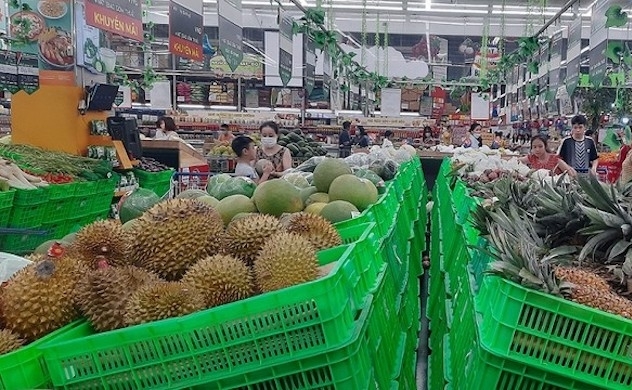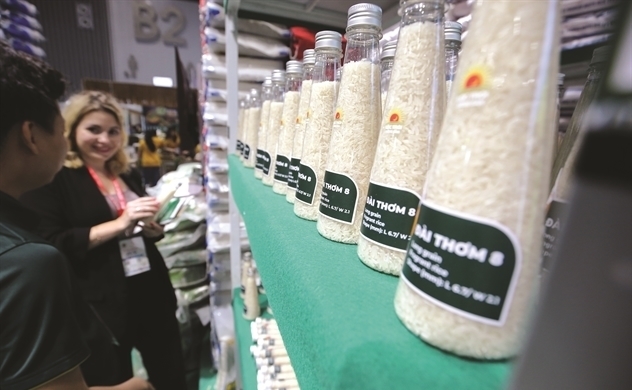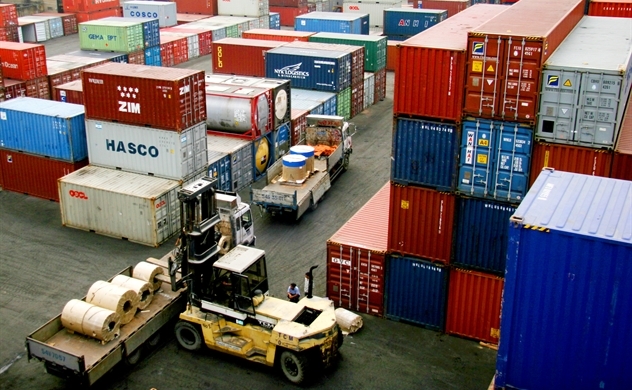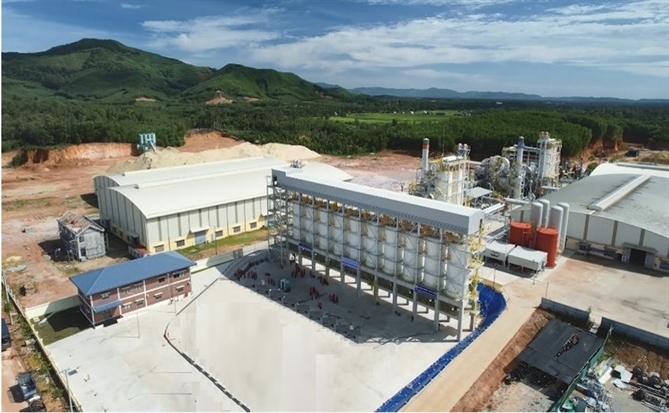Economy’s recovery underway, but risks linger

The domestic economy is showing some signs of recovery, but global uncertainties can be a snag. Photo by NDO.
After being bogged down in massive woes during the first six months of 2023, the domestic economy has started the first month of the second half of the year with quite positive information.
What is most obvious is industrial production, which is very noteworthy as it can reflect many angles of the economy.
“Industrial production in July has become much better than the previous month,” said the General Statistics Office (GSO).
In July 2023, the index of industrial production (IIP) not only increased by 3.9%, compared to the previous month but also climbed by 3.7% year-on-year. In particular, the IIP in July has bounced back strongly in several localities.
For example, in the northern province of Bac Ninh, where Samsung’s factories are located, the province’s IIP in the month expanded by 23.8% month-on-month, after suffering a consecutive reduction in the first months of the year, which was one of the big reasons for Bac Ninh’s negative growth of 12.59%, with the province ranked at the bottom of the ranking for GRDP growth, in the first half of the year.
Not only Bac Ninh, but many industrial production hubs in Vietnam have also enjoyed a positive IIP increase in the first month of the third quarter, such as Thai Nguyen (9%), Vinh Phuc (5.8%), Binh Duong (2.3%); Ho Chi Minh City (1.9%); and Long An (0.8%).
In the first seven months of this year, the year-on-year IIP has ascended in 49 localities and decreased in 14 localities throughout the country. Thus, as compared with the figure for six months, one more locality has had a positive IIP increase and one less locality has had a negative IIP increase.
Continued rebound
Industrial production has shown signs of bouncing back, also meaning more positive domestic consumption and exports. Data from the GSO have shown that the economy’s export turnover of goods in July is estimated at 29.68 billion USD, up 0.8% compared to the previous month. Meanwhile, attracting foreign direct investment for the first time so far in the year, climbed by 4.5% over the same period last year, reaching nearly 16.24 billion USD.
This is probably also quite consistent with the data on the Purchasing Managers’ Index (PMI) for Vietnam’s manufacturing industry, that S&P Global has recently released. Accordingly, Vietnam’s PMI rose to 48.7 points in July, higher than 46.2 points in June. Although the number remains below 50 points, it still shows manufacturing conditions declined for the fifth consecutive month, but this drop was the smallest in this period.
While the rebound in industrial production and exports is quite mild, perhaps, one of the main drivers of the economy’s growth consists in the service and tourism sector. Statistics have shown that the situation is getting increasingly better.
In July, there were more than one million international visitor arrivals to Vietnam, up 6.5% over the previous month and 2.9 times higher than the corresponding period last year. Cumulatively in the first seven months of the year, the number of international visitor arrivals to Vietnam is estimated at more than 6.6 million, which is 6.9 times higher than the figure recorded in the same period last year.
In addition to the exciting domestic tourism activities in the peak season, the revenue from accommodation and food services in the first seven months is estimated at 377.3 trillion VND (15.72 billion USD), accounting for 10.7% of the total retail sales of goods and consumption service revenues, up 16.3% over the corresponding period last year.
Revenue from travel services is estimated at 18.6 trillion VND (775 million USD), accounting for 0.5% of total retail sales of goods and consumption service revenues, up 53.6% as compared to the same period last year.
Many large tourist areas have recorded a year-on-year seven-month increase in revenue from travel services, such as Danang (99.7%), Hanoi (89.7%); Quang Ninh (82.5%), and Khanh Hoa (75.1%).
Difficulties remain
The government is expecting, that despite massive woes, all efforts are to be made to realise the economy’s growth rate set earlier at 6.5% this year.
However, according to the Asian Development Bank’s (ADB) Asian Development Outlook (ADO) July 2023, released last week, the general economic growth of Southeast Asia is lowered by the bank to 4.6% this year and 4.9% next year, compared with April estimates of 4.7% and 5.0%, respectively.
The ADB also revised its growth forecast for Vietnam down from 6.5 to 5.8% in 2023, and from 6.8% to 6.2% in 2024.
Vietnam’s growth slowed from 6.5% year-on-year in the first half of 2022 to 3.72% a year later, as external demand weakened and growth in manufacturing output braked to only 0.4% - the lowest half-year figure in a dozen years.
The ADB stated that the PMI has languished below 50 since March 2023, as weaker trade growth closed many businesses, notably in export-driven manufacturing. Industrial production was hit as well by recent power outages in the north and trouble in the real estate sector. A credit crunch in response to the corporate bond market and bank exposure to elevated property risk, squeezed construction.
“Weak external demand continued to put pressure on manufacturing and industrial production, while domestic conditions are expected to improve. Inflation is forecast to slow to 4.0% in 2023 and 2024,” the ADB stated.
Weak domestic production and ongoing global risks have also prompted Fitch Solutions to revise Vietnam’s economy this year.
“We expect Vietnam’s real GDP growth to slow sharply from 8.0% in 2022 to 5.8% in 2023,” Fitch Solutions said in its Vietnam country risk report, released last week.
Prompted by economic difficulties, the International Monetary Fund has also lowered its 2023 prediction for Vietnam’s growth from 6.2% in January to 4.7% two weeks ago. This year’s rate will also be among the highest in the Emerging and Developing Asia group, with 30 economies forecasted.
However, the World Bank said on its website, that thanks to its solid foundations, the economy has proven resilient through different crises. GDP growth is projected to ease to 6.3% in 2023, down from 8% in 2022, due to the moderation of domestic demand and exports.
“Vietnam’s economic growth is expected to rebound to 6.5% in 2024, as domestic inflation could subside from 2024 onward. This will be further supported by the accelerating recovery of its main export markets such as the US, Eurozone, and China,” the World Bank stated.
Figures from the Ministry of Industry and Trade showed that in the first half of this year, Vietnam’s export value sat at about 164.45 billion USD, down 12.1% year-on-year – with domestic enterprises coming at 43.41 billion USD, down 11.9% and accounting for 26.4% of the economy’s total export turnover, and foreign-invested enterprises hitting 121.04 billion USD (including crude oil exports), down 12.12% and occupying 73.6% of the total.
Many key export markets of Vietnam have also seen a year-on-year reduction in turnover in the first seven months of this year, including China (4.9%), the US (21.8), the EU (9.9%); ASEAN (9.6%), the Republic of Korea (8.8), and Japan (3.5%).
Source: Nhân Dân

 TIẾNG VIỆT
TIẾNG VIỆT 










_41635620.png)






